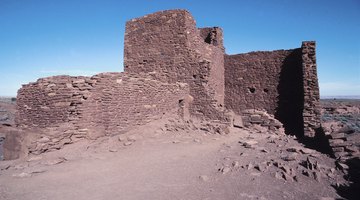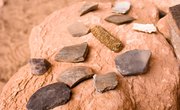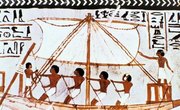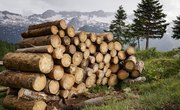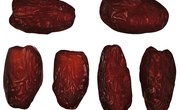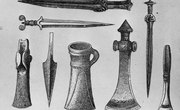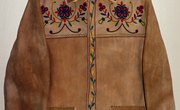Pueblos with their distinctive flat roofs were traditional villages mostly made out of an adobe clay and sandstone mixture. Built by Native American peoples in the Southwest region of the United States, chiefly in New Mexico and Arizona, pueblos have lasted centuries. Pueblo construction began more than a millennium before the arrival of the Spanish conquistadors. The Hopi, Zuni and Acoma tribes are all groups of Pueblo peoples, named so for the villages they built -- "pueblo" in Spanish is a word meaning both village and the people living in it.
Style of Pueblo Houses
Dwellings in pueblo villages were all attached to each other. The box-like pueblo homes were sometimes built in rows on the ground, or as apartment-style, multiple-story structures that rose as many as five levels, all with numerous rooms, although the accommodations got smaller the higher the level. The multiple levels helped to conserve space and increased the security of the settlement. Also for security, access to the interiors wasn't easy. Ground floors generally lacked doors and windows. Windows elsewhere in the structures were generally very small. People typically got into their homes by climbing ladders and then entering through roof openings.
What are Pueblos Made of?
Sandstone blocks and adobe were the two main construction elements used to build pueblos. Adobe is a type of building material made by combining water, straw and clay, which is then shaped and allowed to dry. Timber was also a key component in the construction of pueblos, serving as the framework for the homes. Builders relied more heavily on adobe when stone wasn't available. Adobe is an excellent building material because of the abundance of clay in the Southwest and hot desert temperatures needed to dry and air-cure the bricks.
How to Build a Pueblo House
Ancient pueblo construction often involved shaping walls by laying down a band of wet adobe material and allowing it to dry thoroughly before adding another band on top of it, a time-consuming process. With the arrival of the Spanish in the late 16th century, the Pueblo peoples were introduced to the method of shaping adobe into uniform bricks with wooden forms. Pueblos were constructed by placing stones or bricks of adobe directly onto wood frames. Mud was used to fill up any gaps between the blocks. Adobe also functioned as plaster to coat the walls, which helped keep the bricks securely in place and gave the walls a smooth look. The sturdy, flat roofs of pueblos were made of wood covered by adobe.
Distinctive Characteristics of Pueblos
Pueblos featured some distinctive characteristics as adaptations to the hot, dry climate of the desert. Pueblos were generally equipped with roof spouts to mitigate water erosion and prevent damage to brick surfaces. Their walls were also notably thick -- a means of maintaining cooler temperatures inside. While pueblos were sparsely furnished, the interiors of the walls had ledges and cupboards carved into them. The ends of roof beams in pueblos often jutted out beyond the walls, making them useful for drying laundry or foodstuffs.
Modern-Day Pueblos
Pueblo construction is very durable and some buildings have remained in use for centuries. The Acoma Pueblo in New Mexico, whose construction is estimated to have begun at least 1,200 years ago, is considered by some to be the oldest continuously inhabited human settlement in North America. The vibrant culture of the Pueblo peoples is still going strong in the Southwest. While some continue to employ traditional methods to construct buildings, others integrate modern components into the building process, such as cinder blocks. They typically conceal the cinder blocks with classic adobe, however.
Related Articles
References
- The Pueblo Indians; Pamela Ross
- Life in a Pueblo; Bobbie Kalman and Amanda Bishop
- The Pueblo Revolt; Robert Silverberg
- The Pueblo; Charlotte Yue
- Casa Adobe; Karen Witynski and Joe P. Carr
- Entrepreneurship and Religion; Leo-Paul Dana
- Arizona; Bill Weir
- Ancient Architecture of the Southwest; William N. Morgan
- Native American Art from the Pueblos; Janet Levy
- The Encyclopedia of Housing; Andrew T. Carswell

